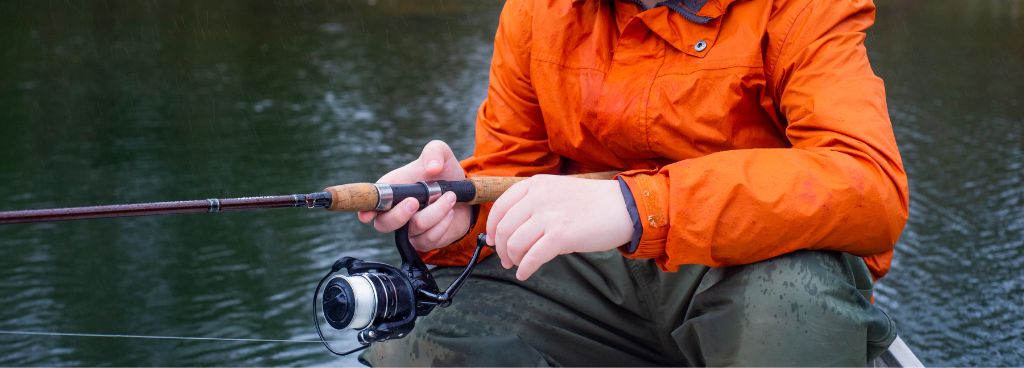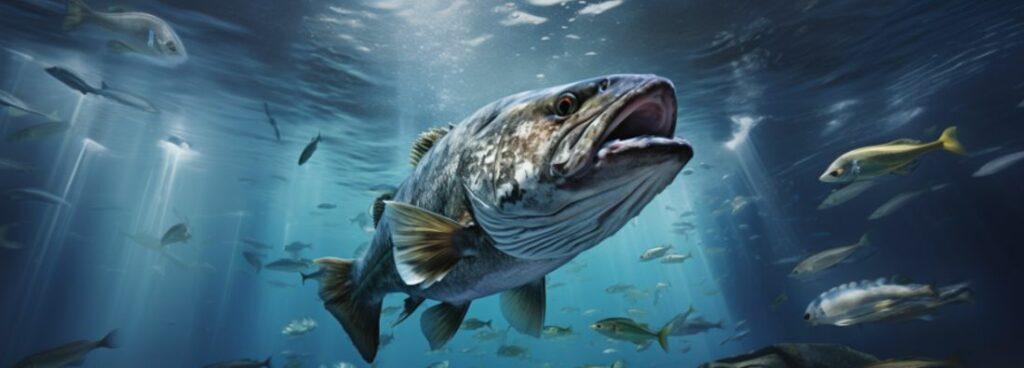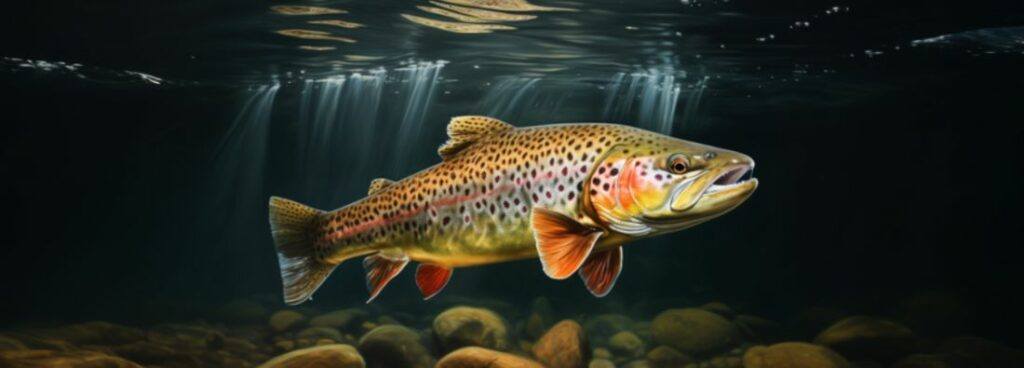Stories Worth Reeling In...
Last Updated on November 3, 2023
When it comes to fishing, many myths and beliefs have been passed down through generations. One such myth revolves around the question, “Do fish bite in the rain?” It’s a common belief among anglers that fish are less likely to bite when it’s raining.
However, is there any truth to this popular assumption? In this blog post, we aim to unravel the mystery and uncover the truth about fish behavior during rainy conditions.
Table of Contents
Rainfall has a profound impact on the aquatic ecosystem, creating a ripple effect that extends to fish behavior. When raindrops hit the water’s surface, they disturb the tranquility and introduce various changes. These changes can range from subtle to significant, and they play a crucial role in shaping fish behavior.
Changing Dynamics: Water Temperature, Oxygen Levels, and Food Availability Rainfall triggers several environmental shifts that can influence fish behavior, particularly their feeding patterns.
One significant factor is the alteration of water temperature.
Rainfall can cause a decrease or increase in water temperature, depending on the prevailing conditions. Such changes can impact fish metabolism and their willingness to feed.
Rainwater can introduce oxygen into the water, enhancing oxygen levels in certain situations. This can be beneficial for fish, as higher oxygen levels stimulate their activity and feeding response.
Rain can also affect the availability and distribution of food sources in the water, which we call rain-induced food sources.
It can dislodge insects, worms, and other organisms from their hiding places, providing a fresh supply of food for fish.
On another hand, excessive rain and runoff can lead to diluted oxygen levels, or it can wash away nutrients disrupting the natural feeding patterns of fish.

Contrary to popular belief, rainy weather can actually enhance fish-biting activity. Several factors come into play during these conditions, making fish more likely to bite.
The Impact of Increased Water Movement and Cloud Cover: rainfall leads to increased water movement, which can trigger a feeding response in fish. The disturbance caused by raindrops hitting the water’s surface creates ripples and currents that stir up aquatic organisms. Fish become more alert and actively seek out food sources in response to this increased water movement.
Cloudy skies accompanying rain can provide favorable conditions for fish biting. Cloud cover reduces the intensity of sunlight, creating a more subdued and comfortable environment for fish. This can encourage them to venture out from their hiding spots and actively search for prey.
When fishing in the rain, it’s essential to adapt your bait and techniques to maximize your chances of success. Certain bait types and techniques can be particularly effective during rainy conditions. Anglers can consider using bait that mimics natural food sources dislodged by rain, such as worms, insects, or baitfish. Lures that create vibrations or mimic wounded prey can attract fish in murky or agitated water.
Adjusting your fishing technique to match the conditions can yield better results. Slowing down your retrieve, casting near structures that provide cover, or targeting areas with increased water movement can increase your chances of enticing a bite.
Fishing in the rain offers unique advantages that can lead to a rewarding angling experience. It’s important to debunk common misconceptions and embrace the opportunities presented by rainy conditions.
The disturbance caused by rain stimulates fish to become more active in search of food. Moreover, rainy weather tends to discourage other anglers, resulting in reduced fishing pressure. This can give you an advantage by having less competition and the opportunity to target fish that are less wary.

To maximize success while fishing in the rain, it’s crucial to employ the right techniques and preparations. Here are some valuable tips to consider:
When it comes to bass fishing, rainy weather can still improve your day. Rain in the forecast often suggests low barometric pressure, which has been shown to make the bass more active and aggressive, and hence more eager to bite.
Rainy Weather and Fish Species Rainfall can elicit varied responses from different fish species, influencing their feeding behavior and activity levels. Understanding how specific species react to rainy conditions can give anglers an edge in targeting their preferred fish.

Bass: Bass, known for their predatory instincts, tend to become more active during and immediately after rainfall. The increased water movement and the opportunity to ambush disoriented prey make them more likely to bite and make your bass fishing successful.

Trout: Rain can enhance the feeding behavior of trout, as it provides an influx of insects and other food sources washed into the water. Trout often position themselves near inflowing streams or in shallower areas where they can take advantage of the abundance of food.
Catfish: Catfish are known to become more active during rainy periods, particularly in freshwater systems. The rain can wash nutrients into the water, attracting baitfish and other organisms, thus enticing hungry catfish.
Pike: Pike are opportunistic predators that thrive in rainy weather. The increased water movement masks their presence, making them more efficient at ambushing prey. Anglers targeting pike should take advantage of their heightened activity levels during rainfall.
Panfish: Species such as bluegill, crappie, and perch are more likely to be active and feed during rainy conditions. They become more accessible as they move closer to the water’s surface to feed on insects and small organisms.
It’s time to change our perspective on fishing in the rain. Instead of avoiding rainy days, anglers should view them as exciting opportunities to connect with nature and potentially catch more fish. Rainy weather often leads to increased water movement, cloud cover, and a surge in aquatic activity, making it an optimal time for successful fishing expeditions. By being prepared, adapting strategies, and exploring the unique benefits of rainy conditions, anglers can unlock the full potential of their fishing adventures.
Remember, some of the most memorable and rewarding fishing experiences can happen when the rain is falling. So, grab your gear, embrace the raindrops, and cast your line into the watery depths. Happy fishing!